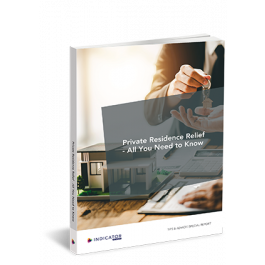Private Residence Relief – All You Need to Know
A Tips & Advice Special Report about...
In a nutshell
Private residence relief exists to ensure that you don’t suffer a capital gains tax charge when you sell your home. But you need to know all the tricky rules to ensure you don’t miss out on this valuable relief.
In detail
In circumstances where there is only one property which has been occupied throughout the period of ownership involved, the application of relief is relatively straightforward. However, matters can become complicated, for example where there are periods of absence, multiple properties, delays in occupation, a separating couple, or where a trust owns the property. HMRC has also stepped up its compliance activity in relation to claims in recent years, and there have been several cases heard by the tribunals.
In this Special Report, we explain the rules in plain English, and show you how to maximise your claim to relief with some sound forward planning. This is more vital than ever before, with the annual exempt amount having been slashed to £6,000 from 6 April 2023, and £3,000 from 6 April 2024
We've created this Tips & Advice Special Report especially for...
Anyone that wants to:
- Get to grips with the tricky CGT rules surrounding property ownership and disposal
You'll get the following free extras with this Tips & Advice Special Report...
An online wervice with ready-to-use documents
- To immediately apply our advice and solutions in practice
- That you can easily adapt to suit your own requirements
In this Tips & Advice Special Report you'll read about...
1. Private residence relief (PRR) overview
1.1. How does PRR work?
1.2. What types of property does the relief apply to?
1.3. Does the property have to be located in the UK?
1.4. Is PRR only available to individuals?
1.5. Is claiming PRR the same as “flipping”?
2. Partial occupation of the property
2.1. What if the property has not been occupied throughout the period of ownership?
2.2. Is it enough to just stay a few nights to claim this relief?
2.3. What other periods of absence qualify?
2.4. What are the conditions for the three-year period?
2.5. What about the four years relating to employment?
2.6. Periods spent working overseas?
2.7. Are the periods of initial and subsequent occupation subject to any further conditions?
2.8. What if more than one permitted period of absence applies?
2.9. What is the initial two-year allowance for delayed occupation?
2.10. When does the period of ownership start?
2.11. What if part of the property is used for a business?
3. Multiple properties
3.1. What if I have more than one home?
3.2. How does PRR apply if there are multiple properties and no election?
3.3. How does a main residence election work?
3.4. What if I’ve missed the two-year deadline?
3.5. Is the election made in a specific format?
4. Grounds, gardens and other buildings
4.1. Can PRR apply to land?
4.2. What counts as “garden or grounds”?
4.3. What is the “permitted area”?
4.4. What if the grounds are larger than 0.5 hectare?
4.5. Does the land need to be adjacent to the property?
4.6. Can I sell parcels of land and claim PRR?
4.7. What about additional buildings?
5. Job-related accommodation
5.1. What if my employer requires me to live somewhere specific?
5.2. What counts as “job related”?
5.3. Can this apply to company directors?
5.4. What about the intention to occupy?
5.5. Could I let the relevant property?
5.6. What if there are also periods of absence to include?
6. Trusts
6.1. How does PRR apply to trusts?
6.2. What does “entitled to occupy” mean?
6.3. Do the restrictions on relief apply in the same way as to individuals?
6.4. Can the trustees nominate a property?
6.5. Are there any circumstances where PRR is unavailable?
7. Residence, domicile, and overseas property
7.1. How are non-residents taxed on gains?
7.2. Does domicile affect the position?
7.3. How are the PRR rules modified for these situations?
7.4. Are there any other special rules for non-resident disposals?
8. Married couples and civil partners
8.1. How does PRR apply to married couples and civil partners?
8.2. What if one partner transfers property to the other?
8.3. What are the considerations on separation?
8.4. Are there any particular considerations with the family home?
9. Series of transactions: is there a trade?
9.1. I want to start buying, renovating and selling properties - can PRR apply?
9.2. What have the courts said?
9.3. Will business asset disposal relief (BADR) be available?
10. Appendices
10.1. Appendix A - Main residence election
10.2. Appendix B - Claim for private residence relief to apply to a former home
10.3. Appendix C – Holdover relief claim
10.4. Appendix D – The statutory residence test
10.5. Automatic overseas test
10.6. Automatic UK test
10.7. Sufficient ties test
10.8. The five connecting ties
10.9. Dual residence
You can choose from the following options...
Paper
- The hard copy version
- Keep it on your desk or use it whenever you're offline
Digital
- The PDF-version
- Delivered to your inbox
Take a look at your options below.
Special subscribers' offer
£90.00
£70.00
Only if you already have a subscriptionStandard offer
£90.00
Special subscribers' offer
£90.00
£70.00
Only if you already have a subscriptionStandard offer
£90.00

Got a question? Call Customer Services
(01233) 653500


 (01233) 653500
(01233) 653500 







